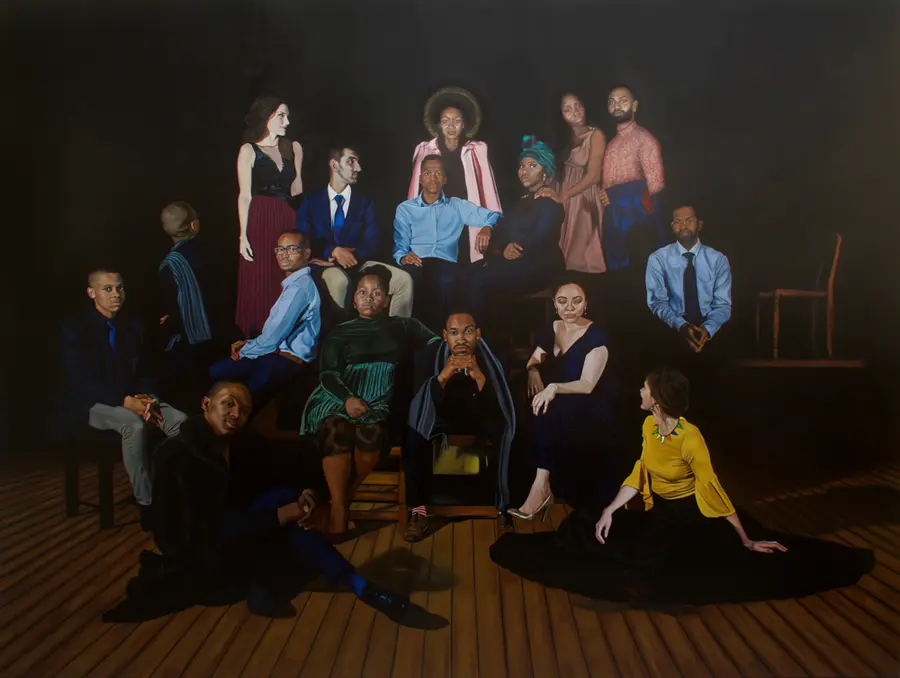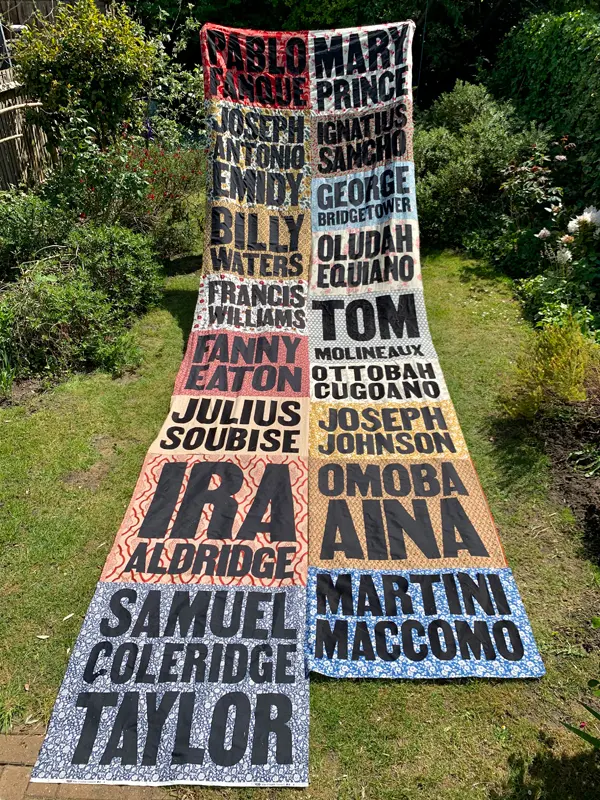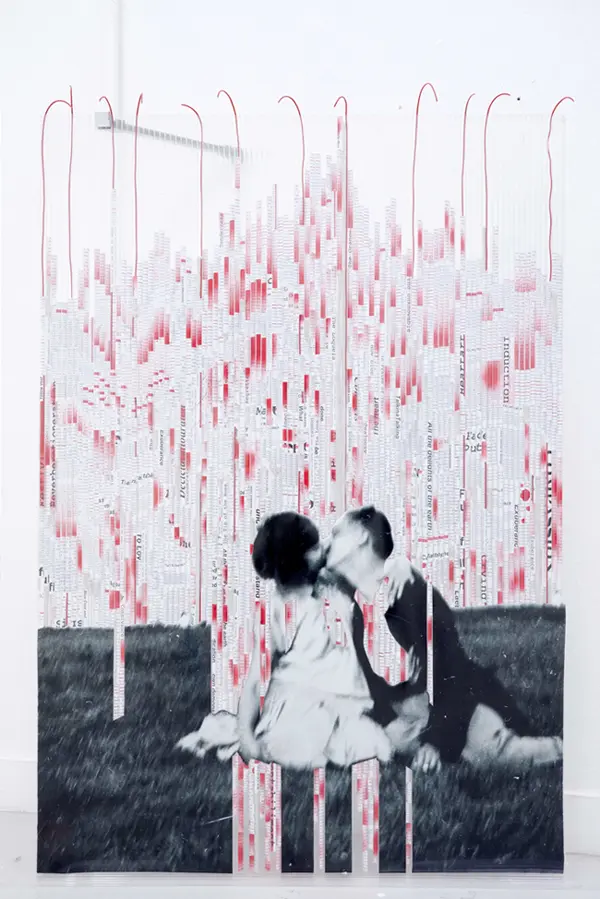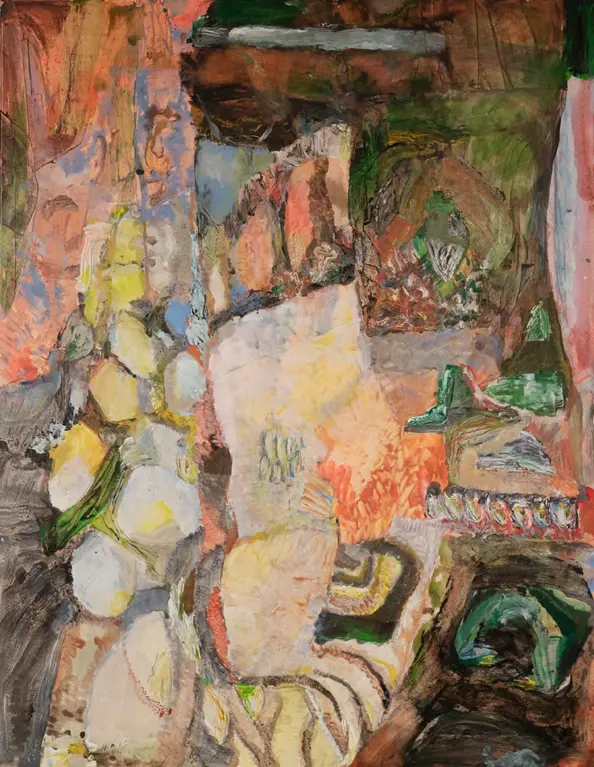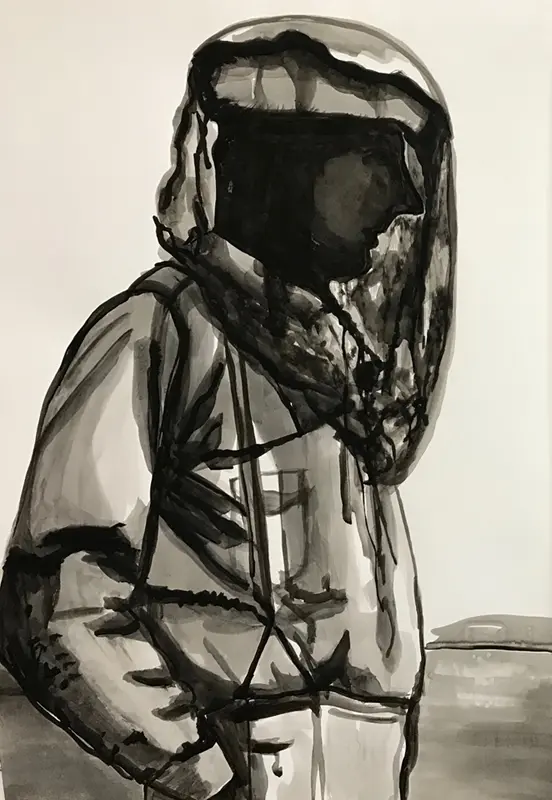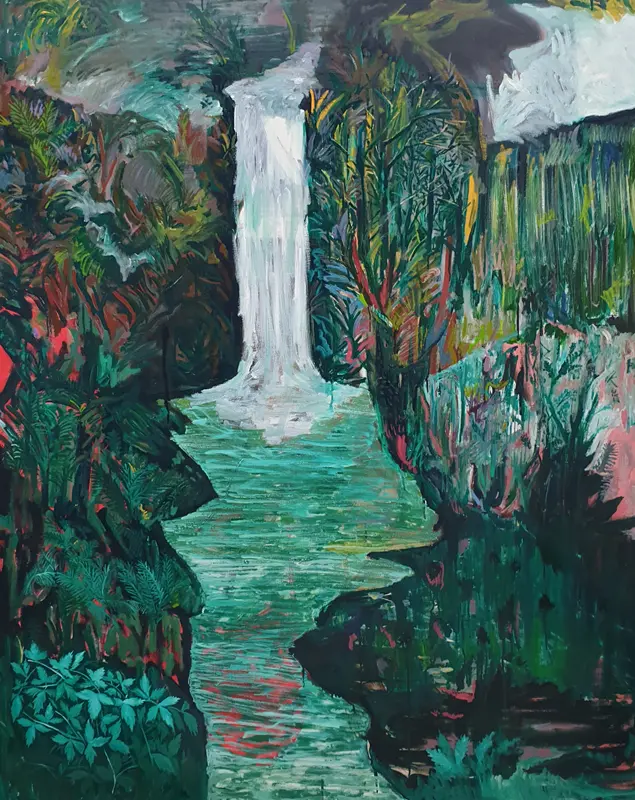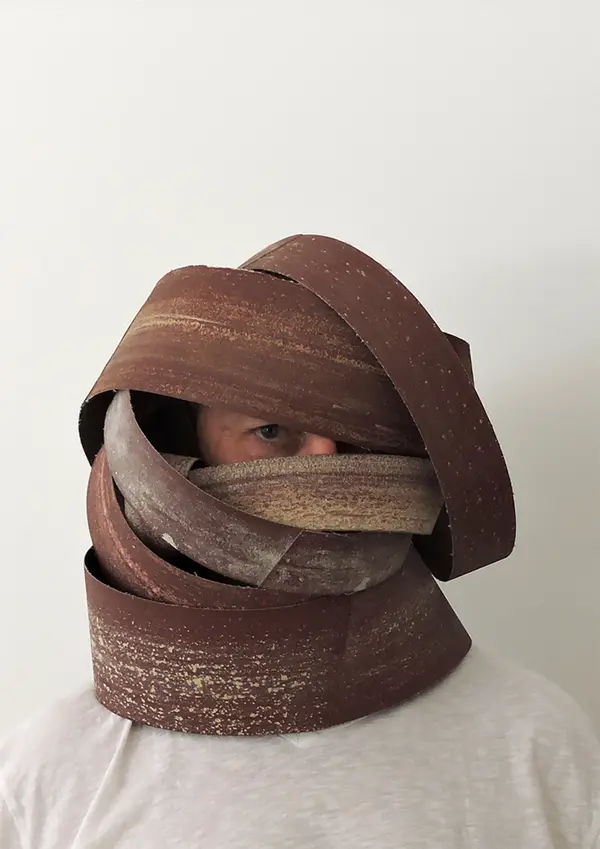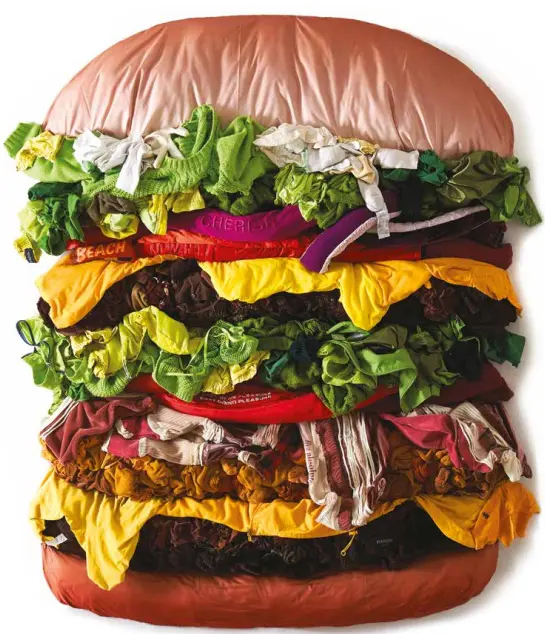Saatchi Gallery is delighted to announce that it has reopened to the public on Thursday September 3rd, 2020 with ‘London Grads Now.’. This thought-provoking exhibition showcases works by graduating students from London’s leading fine art schools including; Royal College of Art, UCL: Slade School of Art, Goldsmiths: University of London, UAL: Chelsea College of Arts, UAL: Wimbledon College of Arts, UAL: Camberwell College of Arts and UAL: Central Saint Martins.
Following the unprecedented cancellation of graduation shows across London due to COVID-19 restrictions, Saatchi Gallery with the generous support of Kristin Hjellegjerde Gallery, invited students and lecturers to organise an exhibition that would enable graduating students to showcase their works safely within international-quality gallery spaces. Through an incredibly collaborative effort London Grads Now. will bring together under one exhibition over 150 graduating artists and more than 200 works. Saatchi Gallery, which transitioned to a charitable organisation in 2019 and relies upon private donations and public support, has a strong commitment to expanding and improving the knowledge and passion for the arts, particularly contemporary art. London Grads Now. is a key part of that ongoing commitment.
MFA graduate and curator of the selected works from UCL: Slade School of Art, Victoria Cantons, refers to her artists as “fresh graduates who provide a snapshot of the exciting ideas, explorations and discussions that are occurring in art today. The work is important as a reflection of the experience we’re going through now.”
The exhibition was curated by Mandy Franca (curator of selected works from Royal College of Art), Victoria Cantons (curator of selected works from UCL: Slade School of Art), Januario Jano (curator of selected works from Goldsmiths, University of London), Juan Bolivar (curator of selected works from UAL: Chelsea College of Arts, UAL: Wimbledon College of Arts and UAL: Camberwell College of Arts), and Mazzy-Mae Green & Greta Voeller (curators of selected works from UAL: Central Saint Martins). Graphic design graduates from UAL: Central Saint Martins, Abbie Lilley and Lili Phillips designed all promotional materials of London Grads Now.
Juan Bolivar, painting lecturer and curator for the selection of works from UAL: Camberwell, Chelsea and Wimbledon, commented “This exhibition of London-wide MA graduates is an incredible opportunity to celebrate the work of a new generation of artists and recognise the resilience of the human spirit. Selecting from a rich variety and diversity of MA graduates practices that have been nurtured during their time at CCW (Camberwell, Chelsea and Wimbledon), one can feel reassured that in this glimpse of voices we have a future. This is a London art scene that is alive and kicking.”
Saatchi Gallery has been committed to supporting emerging British artists for over 35 years, and now more than ever, we are pleased to support emerging artists during these uncertain times. We have provided seven gallery spaces from September 3rd through October 11th, 2020 to our participating schools – with each gallery space entirely curated by students and lecturers.
Following the success of online graduation showcases for our participating schools, we believe London Grads Now. will enable audiences to discover new artists. The health & safety of visitors and staff is our priority. Saatchi Gallery will be following government advice on health & safety measures including:
Social distancing throughout our building
Operating a one-way navigation throughout our spaces
Wearing of face coverings by staff and visitors
Multiple hand sanitisation stations
COVID-19:
Saatchi Gallery is committed to playing our part in encouraging the art world to reopen by supporting artists and exhibitions. The health and safety of everyone involved remains our top priority. All visitors, including Members, need to book a timed ticket online before visiting. There are one-way routes around the gallery, guiding visitors through the exhibition. Each route offers access to toilets, our Saatchi Store and Restaurant. All visitors are required to wear face coverings whilst inside our galleries, apart from those who are exempt. If you or anyone you live with displays symptoms associated with Covid-19, or if you’ve recently been in contact with someone who has Covid-19 please stay at home and delay your trip until it is safe to visit the Gallery. All of our staff have been given comprehensive Covid-19 specific training.
About Royal College of Art
The Royal College of Art is a public research university in London, United Kingdom, with campuses in South Kensington, Battersea and White City. The only entirely postgraduate art and design university in the world, it offers postgraduate degrees in art and design to students from over 60 countries. Notable alumni from the twentieth and twenty-first centuries include the sculptors Barbara Hepworth and Henry Moore, painters Frank Auerbach, David Hockney, Bridget Riley, Sir Peter Blake and Charles Tunnicliffe, artists Jake and Dinos Chapman, Tracey Emin and R. B. Kitaj, fashion designers Ossie Clark and Zandra Rhodes, industrial designers James Dyson and David Mellor, film directors Tony and Ridley Scott, writer Travis Jeppesen, designers Thomas Heatherwick and Sir David Adjaye, prominent member of the suffragette movement Sylvia Pankhurst, the musician Ian Dury and the actor Alan Rickman.
About Slade School of Fine Art
The UCL Slade School of Fine Art is the art school of University College London and is based in London, United Kingdom. Founded in 1871, it has offered female students education on equal terms as men from the outset and has been ranked on numerous occasions as as the UK’s top art and design educational institution. Since its inception the Slade has been at the forefront of developments in the field of contemporary art and welcomed students from all over the world. The school is organised as a department of UCL’s Faculty of Arts and Humanities. Notable alumni include include Gwen John, Augustus John RA, Walter Sickert RA, Paul Nash, Sir Stanley Spencer CBE RA, Dora Carrington, Euan Uglow, Richard Hamilton CH, Derek Jarman, Martin Creed, Dame Paula Rego DBE RA, Mona Hatoum, Sir Eduardo Paolozzi CBE RA, Sir Antony Gormley OBE, Cecily Brown, Dame Rachel Whiteread DBE, Jenny Saville RA, Phyllida Barlow CBE RA, Tacita Dean CBE RA, Michael Armitage, Zhi Lin, Raymond Briggs CBE and Charli XCX.
About Goldsmiths
Goldsmiths, University of London is a public research university in London, England, specialising in the arts, design, humanities, and social sciences. It is a constituent college of the University of London. It was founded in 1891 as Goldsmiths’ Technical and Recreative Institute by the Worshipful Company of Goldsmiths in New Cross, London. Notable alumni include Damien Hurst, Antony Gormley, Lucian Freud, Bridget Riley, Sam Taylor-Johnson, Gary Hume, and Sarah Lucas.
About Chelsea Collage of Arts
Chelsea College of Arts is a constituent college of the University of the Arts London based in London, UK, and is a leading British art and design institution with an international reputation. It offers further and higher education courses in fine art, graphic design, interior design, spatial design and textile design up to PhD level. Notable alumni include Frank Bowling, Helen Chadwick, Anish Kapoor, Steve McQueen, Haroon Mirza, Mariko Mori, Mike Nelson, Chris Ofili, James Richards, Mark Wallinger, and Saskia Olde Wolbers.
About Wimbledon College of Arts
Wimbledon College of Arts, formerly Wimbledon School of Art, is a constituent college of the University of the Arts London specialising in theatre, screen and performance art. It is located in Wimbledon and Merton Park, South West London. Wimbledon delivers specialist art, design and theatre courses ranging from undergraduate to postgraduate, as well as providing research supervision for students undertaking a research programme of study. Notable alumni include Hurvin Anderson (artist, Turner Prize nominee 2017), Raymond Briggs (author, famous for ‘The Snowman’), Tony Cragg (1988 Turner Prize winner), Peter Doig (1994 Turner Prize nominee), Anthea Hamilton (Turner Prize nominee), Lubaina Himid (Turner Prize winner 2017), Richard Hudson[dead link] (production designer, famous for Walt Disney’s The Lion King/Tony Award winner), Phoebe Philo (fashion designer, former director of Céline and Chloé).
About Camberwell College of Arts
Camberwell College of Arts is a constituent college of the University of the Arts London, and is regarded as one of the UK’s foremost art and design institutions. It is located in Camberwell in South London, England, with two sites, located in Peckham Road and Wilson Road. It offers further and higher education programmes, including postgraduate and PhD awards. The College has retained single degree options within Fine Art, offering specialist Bachelor of Arts courses in painting, sculpture, photography and drawing. The College also runs graduate and postgraduate courses in art conservation and fine art as well as design courses such as graphic design, illustration and 3D design. Notable alumni include Franko B (artist), Jeff Banks (graphic designer and TV presenter), Sue Clowes (fashion designer), Neisha Crosland (textile designer).
About Central Saint Martins
Across art, design and performance the students and staff of Central Saint Martins create ideas, materials and actions for a better future. Among our alumni shaping the world through creative action are Grace Wales Bonner, Matty Bovan, Michael Fassbender, Isamaya Ffrench, Antony Gormley, Craig Green, Isaac Julien, Jean Julien, Ib Kamara, Christopher Kane, Stella McCartney, Alexander McQueen, Morag Myerscough, Mowalola Ogunlesi, Sandy Powell, Laure Prouvost, Simone Rocha, and Yinka Shonibare.